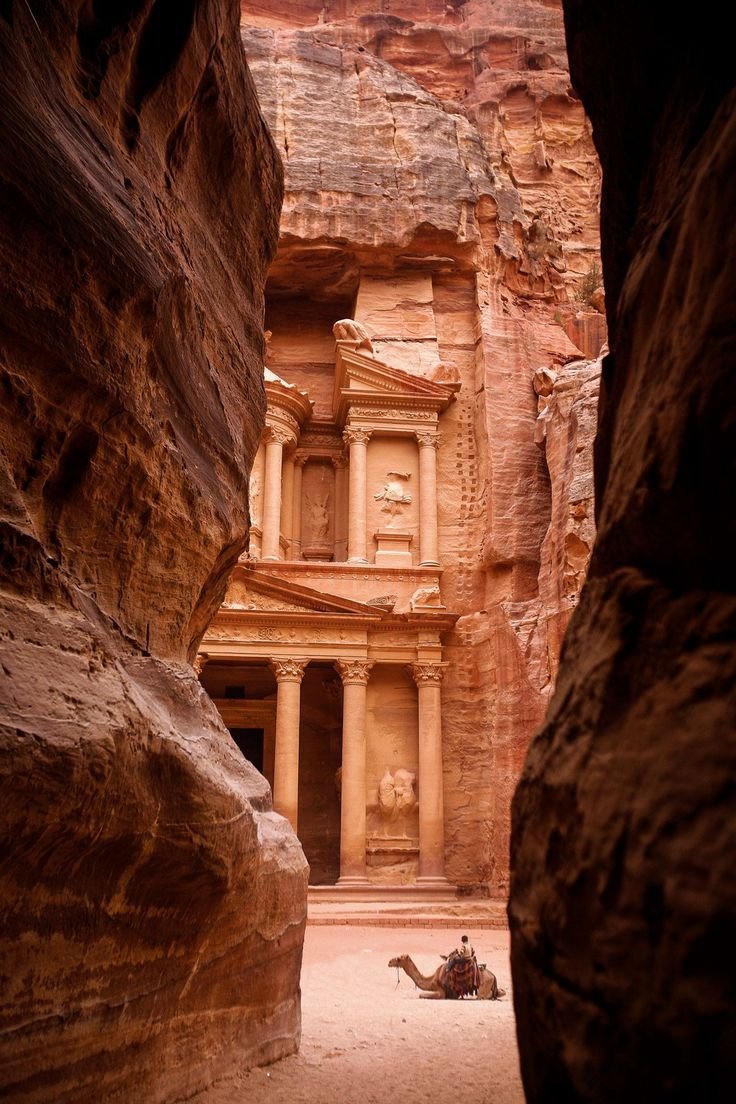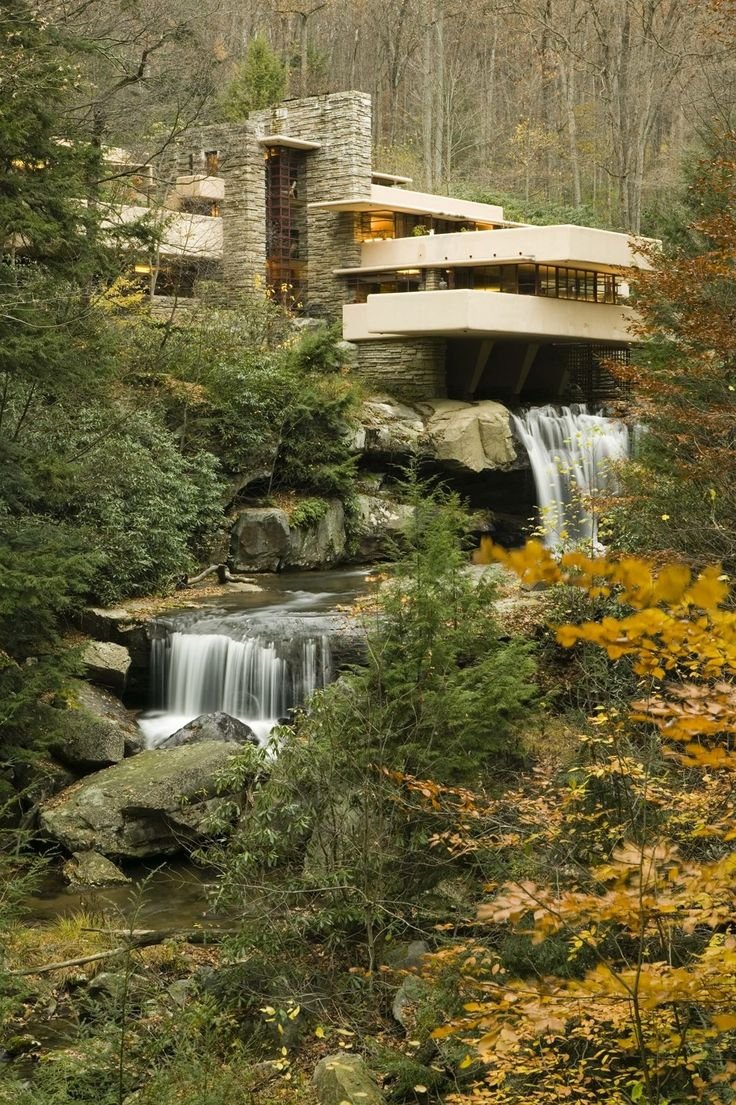The most breathtaking architectural places in the world
Would you like to take a little trip and discover some of the most breathtaking architectural wonders with us?
Here are some of the most amazing sites on Earth, places that will leave you absolutely astonished.
What is it that makes architecture truly breathtaking? What is it that, when you stand in front of it, makes you simply say “wow” and feel as though time has stopped?
Architecture is a complex art—indeed, a blend of many elements coming together. It’s about space and material, time and history, nature and context, emotions and perception. The combination of these elements can create something magical that goes beyond human rationality.
The archeological site of Petra, Jordan
Credits: Pinterest
I. The Engineering and Beauty of Ancient Cultures
A. Petra - The Rose City of Giordania
Let’s begin with Petra, for example. Just by looking at it, we can feel its majesty—an ancient city carved into rose-red sandstone cliffs. Founded around the 4th century BC and designated a UNESCO World Heritage Site since 1985, Petra is a marvel of both architecture and engineering. It’s known for its colorful rock stratifications, created by iron oxide and mineral deposits, which give Petra its unique palette and have earned it the nickname “The Rose City.”
The archeological site of Petra, Jordan
When we look at it, we can immediately sense the power of the material that shapes this monumental architecture. Everything is beyond human scale, yet it leaves you with a sense of peace, where time seems to stand still and you can wander around, contemplating the site’s magnificence.
But what makes the experience even more extraordinary is the way you reach these architectural marvels. The main entrance to the ancient Nabatean city is through the Siq, a narrow natural gorge formed by tectonic forces and later shaped by water erosion. The Siq ends at Petra's most iconic monument: Al-Khazneh (the Treasury).
The contrast between the small scale of the path and the monumental scale of the architecture amplifies the sense of awe exponentially—and that contrast is one of the keys to great architecture.
B. The Parthenon - the “Origins” of Architecture
From Greek culture we can learn another fundamental key to great architecture: the importance of harmony and proportions. Based on the concepts of the Golden Ratio and entasis, the Parthenon represents one of the main symbol of Classical architecture, standing to this day as a model to aspire to.
The Parthenon, Athens
Even though it was damaged by a bombing by cannon fire in 1687, the Parthenon still embodies a mastery of craftsmanship. It’s incredible that in the 5th century BC, they managed to realize a monument of such magnitude, transporting all the marble blocks from Mount Pentelicus to the Acropolis – 16 kilometers away – and assembling them without the aid of modern tools. An operation that still seems almost impossible today.
Beyond this, what’s impressive, is its relationship with the surrounding context. Located on the Acropolis -the highest point and the sacred heart of the Greek city - the Parthenon dominates Athens, appearing as a symbolic connection between the ethereal and the earthly. The Parthenon is not immediately accessible. You have to patiently follow a path - the Via Sacra - that leads you up to the Acropolis. After climbing it, you reach a place suspended in a peaceful atmosphere, surrounded by magical nature and historical ruins that still today inspire wonder at human ability and sensitivity.
Everything about the Parthenon is a spiritual and personal experience that leaves you breathless.
II. A fascinating dialogue between Modern Architecture and Its surroundings
C. Fallingwater - a home shaped by landscape
Speaking of nature. Designed by Frank Lloyd Wright in 1936, Fallingwater is an iconic example of organic architecture. Breathtaking in a truly unique way, it challenges the traditional concept of what a house should be.
As the name suggests, it was built directly over a waterfall in the Laurel Highlands of Pennsylvania—an unusual and, at the very least, difficult location to work with. Yet Wright managed to create one of his greatest masterpieces, redefining the boundaries of architecture.
Frank Lloyd Wright believed that architecture should not dominate nature, but rather harmonize with it. This belief was central to his vision: to design a house that blends seamlessly into its natural surroundings, as if it had grown organically from the landscape itself. The result is simply astonishing.
Fallingwater, Pennsylvania
With its cantilevered balconies that seem to float above the water, natural light flooding the interiors, and materials that echo the surrounding environment, Fallingwater feels both harmonious and effortless—almost as if it defies gravity. These elements make it not just a house, but a sanctuary.
The house emanates a serene, almost meditative quality. Every detail—from the architecture to the sound of the nearby waterfall—has been thoughtfully considered. This transforms the experience from simply visiting a building into a moment of complete immersion in beauty and tranquility. It’s a place where the noise of the outside world fades away, and the rhythm of nature takes center stage.
D. Louvre Museum - Where History meets Modern Marvel
A global symbol of art and culture. The Louvre is not only the world’s largest art museum but also one of the most visited. Originally a medieval fortress and later a royal palace, its architecture tells the story of French history reaching the present through the striking glass pyramid designed by architect I. M. Pei and inaugurated in 1989.
Conceived as main entrance to the museum, the Glass Pyramid has become an iconic feature of modern architecture – a celebrated example of how old and new can coexist in harmony. While its geometric form has a clear reference to ancient Egypt, due to the Louvre’s own extensive Egyptian collection, the pyramid appears as a unique piece of architecture, sharing with its historical model only its shape and symbol.
Standing in front of the museum at Place du Carrousel you immediately become part of this amazing and controversial dialogue between present and past. The overwhelming scale in the best possible way, leaveing you speechless. Stepping inside feels like entering into a timeless world of art and culture.
It’s impressive how Pei’s architectural intervention respects and elevates the historical setting, enriching it with a glow that’s rare to achieve. The final result? A masterful of history, magnificence, and modernity, all experienced in the quiet reverence of visitors. It’s truly an experience not to be missed!
III. The soul of Architecture in Stone and Light
E. Santa Maria del Fiore - the Beating heart of Florence
Santa Maria del Fiore—better known as the Florence Cathedral—isn’t just an architectural icon. It’s the soul of the city, a jaw-dropping masterpiece that blends bold engineering with breathtaking beauty.
Right in the heart of Florence, this cathedral doesn’t just sit in the city—it owns the skyline. Its massive dome towers above the rooftops, visible from just about every angle. And it’s not just big—it’s legendary. The dome is one of the greatest architectural feats of all time, still wrapped in mystery centuries after it was built.
Designed by Filippo Brunelleschi and completed in 1436, the dome was way ahead of its time. No scaffolding. No modern machines. Just genius. Brunelleschi used a clever self-supporting brick pattern (called herringbone) and a system of tension rings to keep everything in place. It was a total game-changer—and even today, engineers are still studying how he pulled it off.
Santa Maria del Fiore, Florence
What makes it so unforgettable isn’t just the size or the technique—it’s the way everything comes together. The warm red brick, the crisp white and green marble façade, the way the light hits it at sunset... it’s pure magic. The outside stuns you with its detail and harmony, while the inside makes you feel small in the best way possible—like stepping into something timeless and sacred.
Santa Maria del Fiore, Florence
The Duomo isn’t just a church. It’s a symbol of Florence’s Renaissance spirit—a bold reminder of the city’s lasting influence on art, architecture, and human imagination. Whether you're gazing up from the piazza, walking beneath the dome’s soaring interior, or climbing to the top for one of the best views in Italy, the experience is unforgettable.
This isn’t just a building—it’s a story carved in stone and brick. A symbol of ambition, beauty, and genius that continues to inspire everyone who sees it.
Final words :
In conclusion, these architectural marvels—whether ancient or modern—remind us of the timeless power of design. They embody human creativity, technical ingenuity, and a deep understanding of how architecture can shape our experiences. These buildings transcend mere function—they evoke emotion, challenge perceptions, and leave a lasting imprint on those fortunate enough to experience them. Truly, great architecture has the power to transport us, to make us see the world anew, and to remind us of the enduring connection between humanity, art, and the natural world.





















